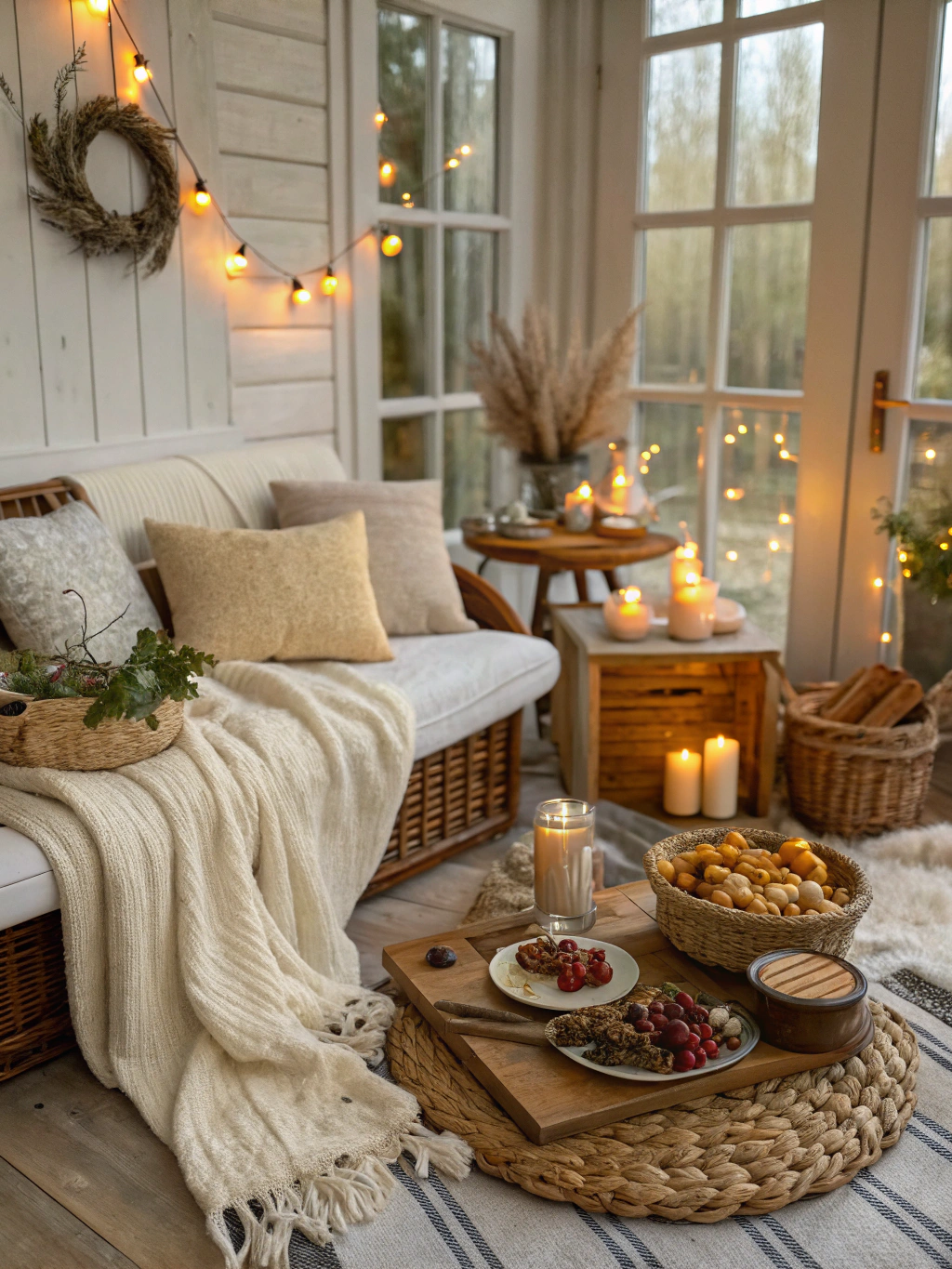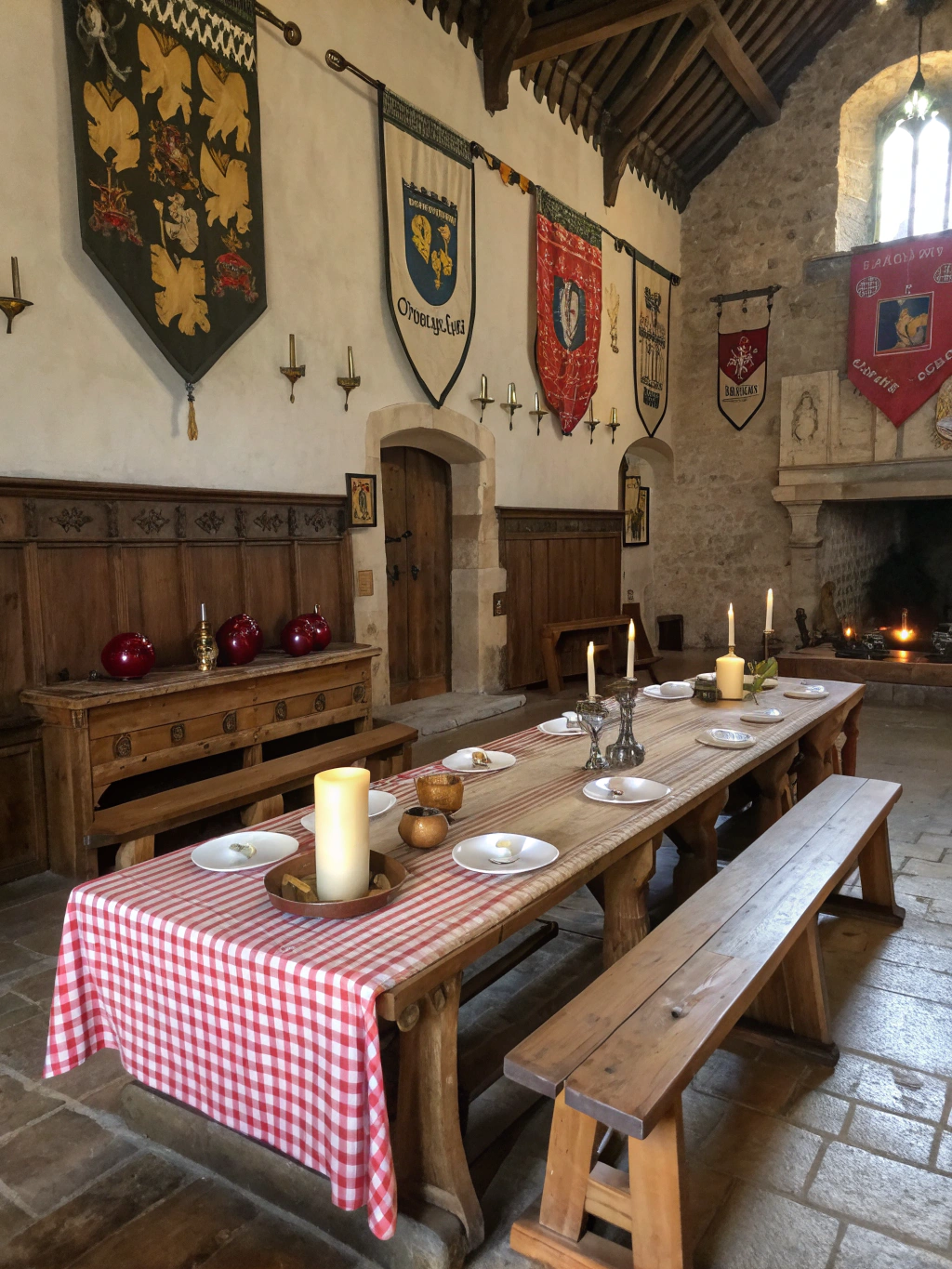Medieval Dining Room & Rustic Tablescape Ideas
Okay, so picture this: I'm standing in my dining room last Thursday, holding a box of mismatched candles I impulse-bought at HomeGoods (you know the ones – they smell like "autumn harvest" but really just smell like cinnamon had a fight with vanilla). My husband walks in and catches me arranging dried herbs from our garden that's mostly dead because I forgot to water it for… let's not talk about how long. "Are we expecting the Knights of the Round Table?" he asks. And honestly? That's when it hit me – I've been slowly turning our dining space into something straight out of a medieval feast hall, and I'm not even sorry about it.
There's something absolutely magnetic about medieval dining room & rustic tablescapes that just speaks to my soul. Maybe it's all those fantasy shows I binge-watch while folding laundry (looking at you, House of the Dragon), or maybe it's because there's something deeply satisfying about creating a space that feels both ancient and cozy. Like you could equally host a book club or plan a siege over soup.
The Foundation: Start with Your Table (Obviously)
Let me tell you about my dining table journey – it's been a ride. We started with this sleek IKEA number that looked like it belonged in a spaceship. Nice? Sure. But medieval feast-worthy? Not even close.
The game-changer was finding this chunky farmhouse table at an estate sale. The wood is scarred, there's a wine stain that might be older than me, and one leg needs a folded napkin under it to stop the wobble. It's perfect. If you're going for that medieval dining room & rustic tablescape vibe, your table needs character. Think heavy wood with visible grain, maybe some iron details, definitely some imperfections that tell stories you'll never know.
What to look for:
- Reclaimed wood tables (check Facebook Marketplace – seriously, gold mine)
- Trestle-style bases that scream "feast hall"
- Dark stains or natural weathered finishes
- Tables that could survive a sword being slammed on them (not that I've tested this)
Layer Your Linens Like You're Preparing for Winter
Here's where I get a little extra, and by a little, I mean a lot. Table runners are your best friend when creating medieval dining room & rustic tablescapes. I have approximately seventeen of them, which my storage situation does not appreciate, but whatever.
Start with a base layer – maybe a heavy linen tablecloth in cream or deep burgundy. The kind that pools slightly on the floor because you bought the wrong size but it actually looks better this way. Then add a runner down the center. I found this gorgeous tapestry-style runner at World Market that has these intricate patterns that look hand-woven even though they're definitely machine-made and cost $24.99.
The trick is mixing textures. Rough burlap with smooth velvet. Coarse linen with a strip of faux fur (yes, really – trust the process). It's like your table is wearing layers for a castle that has terrible heating, which, let's be honest, they all did.
Candlelight: Because Medieval Times Didn't Have Edison Bulbs
Listen, I know we all love our overhead lighting with dimmer switches, but if you want that authentic medieval vibe, you need candles. Lots of them. More than seems reasonable.
I've got pillar candles of varying heights clustered together like a wax forest in the center of my table. The key is using candlesticks that look like they could double as weapons – heavy iron, pewter, or brass ones that have that slightly tarnished look. Pottery Barn has some great options, but honestly? Thrift stores are where the magic happens. I found a set of four iron candlesticks that look like they were forged by an actual blacksmith for $12 total.

Pro tip: Mix real candles with battery-operated ones. I learned this the hard way after the Great Tablecloth Fire Incident of 2021. We don't talk about it, but now half my candles are fake and nobody can tell the difference.
Dishes That Could Survive a Dragon Attack
Your everyday Target dinnerware isn't going to cut it here, friends. You need plates that look substantial. Heavy. Like they could be used as shields in a pinch.
I'm obsessed with stoneware – the chunkier, the better. My collection is a mix of pieces from CB2's rustic line and random finds from antique malls. Nothing matches perfectly, which is exactly the point. Medieval dining wasn't about coordinated place settings; it was about using what you had and making it work.
The essentials:
- Heavy ceramic or stoneware plates in earth tones
- Wooden chargers (World Market has amazing ones)
- Pewter or copper mugs for that authentic tavern feel
- Actual goblets – because drinking water from a goblet makes you feel fancy
Centerpieces That Tell Stories
Forget minimalist centerpieces. Medieval dining room & rustic tablescapes need centerpieces with presence. I'm talking arrangements that look like you foraged them from an enchanted forest, even if you actually foraged them from Trader Joe's.
My current setup includes a wooden dough bowl (found it at an antique mall in the middle of nowhere) filled with dried lavender, eucalyptus that's definitely past its prime but still looks intentional, and pine cones I made my kids collect last fall. There's also a random antler I found at HomeGoods because why not? It's giving "hunter's lodge meets witch's cottage," and I'm here for it.
Sometimes I add seasonal elements – gourds in fall, evergreen branches in winter, wildflowers in summer that will inevitably die within 48 hours because I cannot keep flowers alive to save my life.
The Chair Situation: Comfort Meets Castle
Okay, real talk: authentic medieval seating was probably terribly uncomfortable. But we're going for the vibe, not historical accuracy that leads to back problems.
I've collected a mix of chairs over the years – some ladder-backs from a garage sale, two wingback chairs from my grandmother's house that I reupholstered in this gorgeous burgundy velvet (badly, but from a distance you can't tell), and a bench I convinced my husband to help me make from reclaimed barn wood. It looks like we raided several different dining rooms, which is basically what happened.
Throw some sheepskin rugs over the backs of chairs. Add cushions in rich jewel tones. The goal is "medieval comfort" – an oxymoron, sure, but we're making it work.
Ambient Details That Seal the Deal
This is where the magic really happens. It's all those little touches that transform "dining room with some old stuff" into "legitimate medieval feast hall energy."
I've hung wrought iron wall sconces on either side of our dining room mirror (which I'm pretending is a window to the courtyard). There's a collection of pewter tankards on the sideboard that we literally never use but look incredible. Dried herb bundles hang from a rod I installed above the window – rosemary, thyme, and sage that make the room smell like an apothecary shop.
And here's my secret weapon: a vintage brass chandelier I found on Craigslist for $50. It weighs approximately 800 pounds and my electrician definitely judged me when installing it, but when those candle-shaped bulbs are dimmed low? Pure medieval magic.
Seasonal Swaps Without Starting Over
The beauty of medieval dining room & rustic tablescapes is that they transition through seasons like a dream. You don't need to completely redecorate – just swap a few elements.
Fall? Add burgundy napkins and scatter some acorns around. Winter brings evergreen garlands and maybe some pomegranates (they look so medieval, don't they?). Spring means fresh herbs in little pots and maybe some pussy willows if you're feeling fancy. Summer is all about sunflowers and wheat stalks that'll shed everywhere but look amazing for exactly three days.
The Modern Medieval Balance
Look, I'm not suggesting you go full Renaissance Faire in your dining room (unless that's your thing, then absolutely do it). The trick is balancing authentic medieval elements with, you know, the fact that it's 2024 and we have things like electricity and a desire to be comfortable.
Keep your modern conveniences – just hide them. Tuck that Alexa behind a pewter pitcher. Use LED candles where real ones would be dangerous. Choose chairs that look period-appropriate but won't destroy your spine.
Creating the Experience
Here's the thing about medieval dining room & rustic tablescapes – they're not just about how things look. They're about creating an experience. When friends come over for dinner, they walk into our dining room and immediately slow down. They touch things – the rough wood of the table, the soft velvet of the chair cushions. They comment on the herbs hanging overhead and ask about the stories behind our mismatched dishes.
Last month, we hosted a dinner party, and I went all out. Bread in baskets lined with linen, soup served in actual cauldron (okay, it was a Lodge cast iron Dutch oven, but same energy), and wine in those pewter goblets I mentioned. One friend said it felt like dining in a Game of Thrones episode, minus the political intrigue and unexpected deaths. I'm calling that a win.
Wrapping Up This Feast of Ideas
So here I sit, coffee now cold, still in my pajamas at 11 AM (don't judge), looking at my medieval-inspired dining room that would probably make actual medieval people very confused. But you know what? It makes me happy. It makes every meal feel a little more special, even when it's just leftover pizza on a Tuesday night.
Creating medieval dining room & rustic tablescapes isn't about perfection or historical accuracy. It's about crafting a space that feels warm, storied, and maybe a little magical. It's about mixing textures and time periods until you create something that feels both ancient and utterly yours.
Start small if you need to – maybe just add some pillar candles and a burlap runner. Or go all in and hang tapestries on your walls (I'm considering it). Either way, embrace the imperfect, the weathered, and the wonderful. Your dining room doesn't need to look like a museum – it needs to look like a place where memories are made, stories are shared, and maybe, just maybe, quests are planned over dessert.
Now if you'll excuse me, I need to go water those herbs before they become medieval artifacts themselves. And maybe browse Facebook Marketplace for a suit of armor. You know, for ambiance.





